Related Research Articles

The Rank Organisation was a British entertainment conglomerate founded by industrialist J. Arthur Rank in April 1937, Rank also served as the company chairman. It quickly became the largest and most vertically integrated film company in the United Kingdom, owning production, distribution, and exhibition facilities as well as manufacturing projection equipment and chairs. It also diversified into the manufacture of radios, TVs and photocopiers. The company name lasted until February 1996, when the name and some of the remaining assets were absorbed into the newly structured Rank Group plc. The company itself became a wholly owned subsidiary of Xerox and was renamed XRO Limited in 1997.

Diana Dors was an English actress and singer.

Belinda Lee was an English actress.
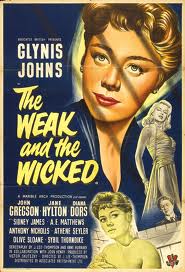
The Weak and the Wicked is a 1954 British drama film directed by J. Lee Thompson based on the autobiographical novel Who Lie in Gaol by his wife, Joan Henry, starring Glynis Johns and Diana Dors.
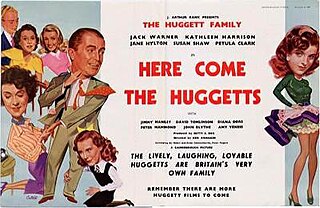
Here Come the Huggetts is a 1948 British comedy film, the first of the Huggetts series, about a working class English family. All three films in the series were directed by Ken Annakin and released by Gainsborough Pictures.
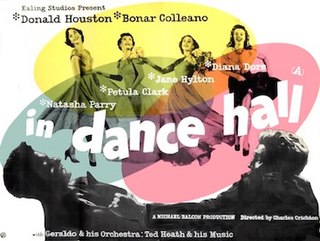
Dance Hall is a 1950 British drama film directed by Charles Crichton. The film was an unusual departure for Ealing Studios at the time, as it tells the story about four women and their romantic encounters from a female perspective.

Susan Shaw was an English actress.

Madonna of the Seven Moons is a 1945 British drama film starring Phyllis Calvert, Stewart Granger and Patricia Roc. Directed by Arthur Crabtree for Gainsborough Pictures, the film was produced by Rubeigh James Minney, with cinematography from Jack Cox and screenplay by Roland Pertwee. It was one of the Gainsborough melodramas of the mid-1940s popular with WW2-era female audiences.

Christopher Columbus is a 1949 British biographical film starring Fredric March as Christopher Columbus and Florence Eldridge as Queen Isabella. It is loosely based on the 1941 novel Columbus by Rafael Sabatini with much of the screenplay rewritten by Sydney and Muriel Box.

Vote for Huggett is a 1949 British comedy film directed by Ken Annakin and starring Jack Warner, Kathleen Harrison, Susan Shaw and Petula Clark. Warner reprises his role as the head of a London family, in the post-war years.

Eyewitness is a 1956 British thriller film directed by Muriel Box and starring Donald Sinden, Muriel Pavlow, Belinda Lee, Michael Craig, Nigel Stock and Richard Wattis. It was Produced by Sydney Box for the Rank Organisation.
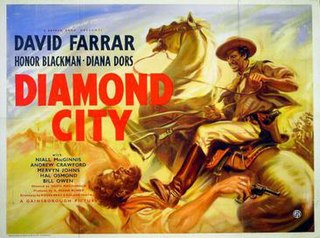
Diamond City is a 1949 British drama film directed by David MacDonald and starring David Farrar, Honor Blackman, Diana Dors and Niall MacGinnis.

As Long as They're Happy is a 1955 British musical comedy film directed by J. Lee Thompson and starring Jack Buchanan, Susan Stephen and Diana Dors. It is based on the 1953 play of the same name by Vernon Sylvaine. It was shot in Eastmancolor at Pinewood Studios near London with sets designed by the art director Michael Stringer.
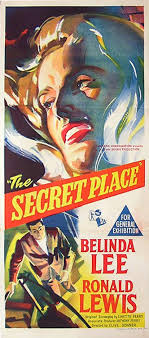
The Secret Place is a 1957 British crime film that was the directorial debut of Clive Donner. It stars Belinda Lee, Ronald Lewis, and David McCallum in a supporting role.

The Calendar is a black and white 1948 British drama film directed by Arthur Crabtree and starring Greta Gynt, John McCallum, Raymond Lovell and Leslie Dwyer. It is based on the 1929 play The Calendar and subsequent novel by Edgar Wallace. A previous version had been released in 1931.
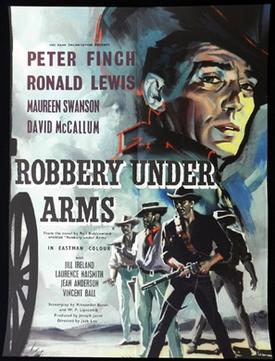
Robbery Under Arms is a 1957 British crime film directed by Jack Lee and starring Peter Finch and Ronald Lewis. It is based on the 1888 Australian novel Robbery Under Arms by Thomas Alexander Browne who wrote under the pseudonym Rolf Boldrewood.
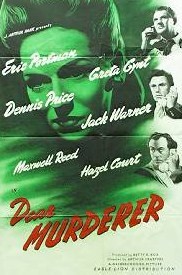
Dear Murderer is a 1947 British film noir crime, drama, thriller, directed by Arthur Crabtree for Gainsborough Pictures, and starring Eric Portman and Greta Gynt.

The Feminine Touch is a 1956 colour British drama film directed by Pat Jackson and starring George Baker, Belinda Lee and Delphi Lawrence. In 1957 it was released as A Lamp Is Heavy in Canada, and The Gentle Touch in the United States.

Penny and the Pownall Case is a 1948 British second feature mystery film, directed by Slim Hand and starring Ralph Michael, Peggy Evans, Diana Dors and Christopher Lee.
The Highbury Studios were a British film studio located in Highbury, North London which operated from 1937 until 1956. The studios were constructed by the producer Maurice J. Wilson. During its early years, the studio was hired out to independent production companies.
References
- ↑ "Sydney Box would groom new British talent via series of 'B' features". Variety . Vol. 161, no. 4. 2 January 1946. pp. 5, 19. Retrieved 5 March 2024.
- ↑ "Hard work and no glamor for starlets". The Australian Women's Weekly . National Library of Australia. 23 August 1947. p. 40. Retrieved 21 May 2012.
- 1 2 3 4 5 6 7 8 9 10 11 12 13 Geoffrey MacNab, J. Arthur Rank and the British Film Industry, Routledge 1994 p141 accessed 21 May 2012
- 1 2 3 4 5 "They Left School". The Sunday Herald . Sydney: National Library of Australia. 7 January 1951. p. 5 Supplement: Features. Retrieved 21 May 2012.
- ↑
- Dors, Diana (1960). Swingin' Dors. World Distributors. p. 19.
- ↑ Dors p. 21
- ↑ Vagg, Stephen (7 September 2020). "A Tale of Two Blondes: Diana Dors and Belinda Lee". Filmink.
- ↑ Bergan, Ronald (1 January 2012). "Maureen Swanson obituary". The Guardian. Retrieved 21 May 2012.
- ↑ "NOTES ON FILMS Life is Spartan at Mr. Rank's Charm School (for men only)". The Sunday Herald . Sydney: National Library of Australia. 26 November 1950. p. 4 Supplement: Sunday Herald Features. Retrieved 21 May 2012.
- ↑ The Rank Charm School at BFI
- 1 2 3 4 5 'The Rank School of Charmers' at the Sexton's Tales accessed 21 May 2012
- ↑ Coleridge, Nicholas (13 June 1993). "The Viscount of Middle England: Lord Rothermere is the last of the grandee press barons, a product of old money and social privilege, living in maverick style. But his empire has at its heart the new-monied aspirational conservatism of the Daily Mail". Independent. Archived from the original on 23 November 2010. Retrieved 7 March 2014.
- ↑ "EXPELLED but it didn't keep Diana down". The Australian Women's Weekly . National Library of Australia. 22 August 1956. p. 12. Retrieved 21 May 2012.
- ↑ "New star fluffed lines in test for part". The Australian Women's Weekly . National Library of Australia. 31 January 1948. p. 32. Retrieved 21 May 2012.